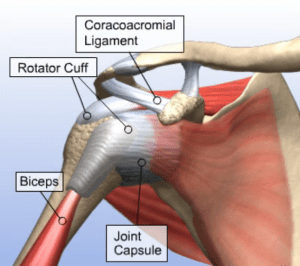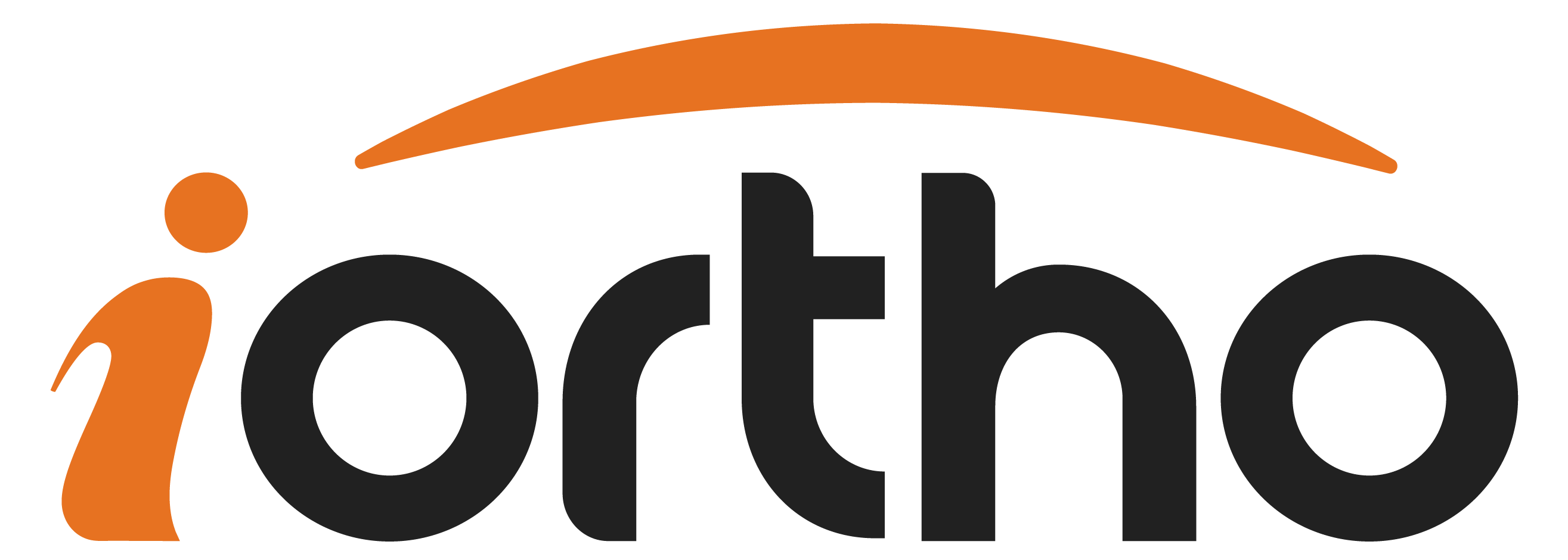Rotator Cuff Surgery
What Is a Rotator Cuff?

The rotator cuff is comprised of four muscles which stabilizes the shoulder joint and allows arms to freely rotate: the subscapularis, teres minor, supraspinatus, and infraspinatus. They attach the shoulder blade (scapula) to the upper arm bone (humerus). The rotator cuff muscles are responsible for most of the upper arm’s movement, including lifting and rotating the arm. The rotator cuff is also critical for keeping the “shoulder in its socket”.
The rotator cuff function is to stabilize and power the shoulder and to maintain the center of rotation of the humeral head on the glenoid. As mentioned, the glenoid is a relatively shallow socket and does not provide enough coverage of the head to make the joint stable.
The labrum and ligaments are passive stabilizing features of the anatomy whereby the rotator cuff is a dynamic stabilizer and functions also to maintain the humeral head center of rotation properly oriented relative to the center of the glenoid.
It does this by drawing the humeral head into the glenoid cavity creating what is called concavity-compression. The rotator cuff also functions to move the humerus through space with the supraspinatus active primarily in abduction and flexion, the subscapularis in internal rotation and the infraspinatus and teres minor in external rotation.
In a rotator cuff tear, one or more of the tendons of the rotator cuff muscles are torn and are no longer fully functional. A rotator cuff tear may be partial or full thickness, depending on the degree in which the tendon has separated.
Symptoms and Causes of Rotator Cuff Tears
Rotator cuff tears often cause pain and weakness. Lifting or lowering the arm can bring on the pain, though it can also occur at rest and at night, especially when sleeping on the injured shoulder. People with rotator cuff tears often experience weakness when they try to lift or rotate the arm. In NYC (New York City, Staten Island, Jersey City) the rotator cuff tear doctors at iOrtho can perform physical examination tests that can diagnose rotator cuff tears. An ultrasound or MRI is required to confirm the diagnosis and to plan rotator cuff tear treatment.
Rotator cuff tearing can be partial or complete. Partial thickness rotator cuff tearing can occur on the bursal surface, articular surface, or both.
Bursal sided tears are more often related to subacromial impingement by the direct influence of the external compression from the adjacent bone surfaces. The articular sided tears are more often related to repetitive stress and unrelated to impingement. The acronym for these tears is PASTA= partial articular sided tendon avulsion.
Full thickness tears are either non-retracted or retracted. Retracted tears can be mildly, moderately, or severely retracted. Tear patterns also include the shape of the tear and crescent tears, U shaped tears and longitudinal tears are examples of common tear patterns. Tears are also classified as small, medium and large.
Rotator Cuff Disease
Rotator cuff disease is a spectrum of pathology that can be inflammation, partial tears and finally full thickness tears. Tendon degeneration is often an underlying cause of rotator cuff disease. Individuals may not realize the extent of the disease until debilitating symptoms develop. Rotator cuff disease may be accompanied by severe nighttime pain or frozen shoulder.
Treatment for Rotator Cuff Tears
Rotator cuff tear treatment may be surgical or nonsurgical. Indeed, many partial thickness rotator cuff tears may heal without surgery. Nevertheless, people who have chronic arm pain, weakness, or who are unable to lift their shoulder or arm should speak with a rotator cuff tear doctor to discuss treatment options.
Non-Surgical Treatment Options
Physical therapy is the main nonsurgical rotator cuff tear treatment. This is appropriate for many partial or chronic functional tears. The physical therapist will help the patient identify ways to avoid further injuring the shoulder and recommend stretching and strengthening exercises to improve shoulder function.
Other nonsurgical rotator cuff tear treatments include steroid injections into the shoulder and nonsteroidal anti-inflammatory medications (NSAIDs). While nonsurgical treatments can be effective at reducing pain, the rotator cuff tear may get bigger over time.
Surgical Options for Torn Rotator Cuff
If nonsurgical treatments fail to relieve symptoms, or if the tear is not appropriate for non-surgical treatment then a rotator cuff tear surgeon may perform a surgical procedure to repair the tendon. Rotator cuff repair is typically performed arthroscopically.

